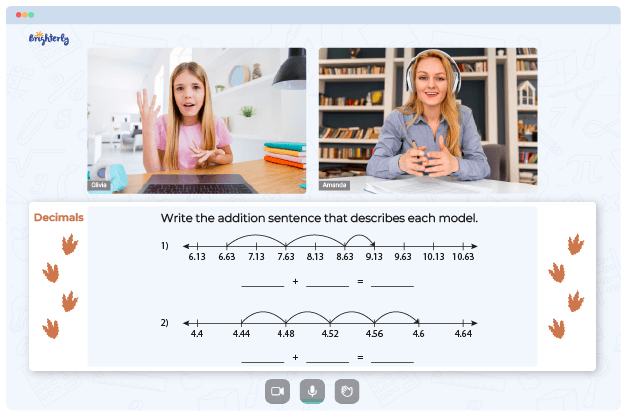Decimal Place Value – Definition, Examples, Practice Problems
reviewed by Jo-ann Caballes
Updated on October 6, 2024
Decimal place values are essential in the understanding of numbers that have remainders. We at Brighterly, want to help your ward learn more about the decimal system. In this article, we explain how to read decimal place values, give relevant examples, and practice questions. Keep reading!
What are decimal place values?
A decimal place value is the position of each digit after the decimal point(.). The first decimal place is the first digit after the decimal point, the second decimal place is the second digit, and so on.
The value of each digit decreases as we move from left to right, meaning, for the number 0.318; the decimal place value of 8 is thousandths, 1 is the hundredths, and 3 is the tenths.
Each place value is divided by 10 as we move from left to right. This means if we start from the thousandths, we keep dividing by 10 until we reach the tenths.
A place value, similarly, is the position that shows a digit’s value, but before the decimal point. In the number, 276:
- the place value of 6 is ones
- the place value of 7 is tens,
- and, the place value of 2 is hundreds…
This means each digit is multiplied by 10, continuously as we move from right to left.
This goes on till infinity, depending on how many numbers are given.
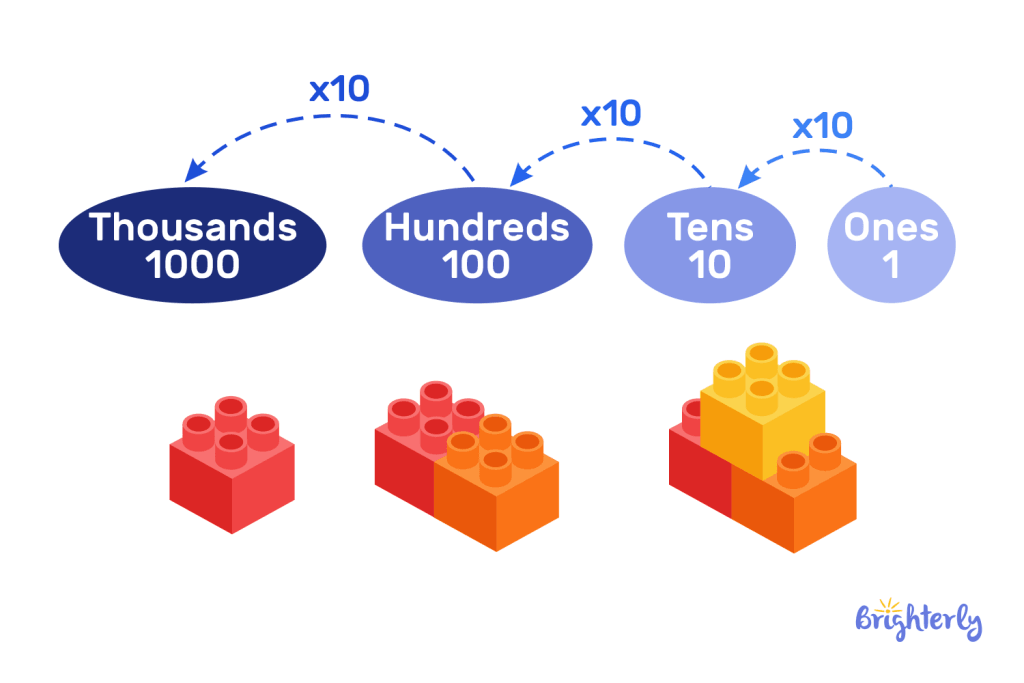
Each place value is multiplied by 10, i.e., the Ones to Tens, then Hundreds to Thousands.
There are no ones in a decimal place value. Instead, the decimal place value begins with tenths.
What is a decimal point?
The decimal point (.) is a symbol that separates a whole number from its fractional remainder.
The decimal express fractions in a base 10 number system— this is what we use for everyday operations like telling the time (24-hour format) and counting money (e.g., dollars and cents).
For example, in $21.13, 21 dollars is the whole number, and .13 cents or 0.13 of a dollar.
Decimal Place value chart definition
The decimal place value chart is a table that contains the decimal places and shows where each decimal figure belongs depending on its position.
In a decimal place value chart, after the decimal point, the place value begins from tenths to hundredths, to thousandths, ten thousandths, and so on till the rightmost digit.
This means whichever digit occurs in the first decimal place is one-tenth of the value of the entire number, the next digit is one-hundredth in value, and the next digit is one-thousandth of the number’s value.
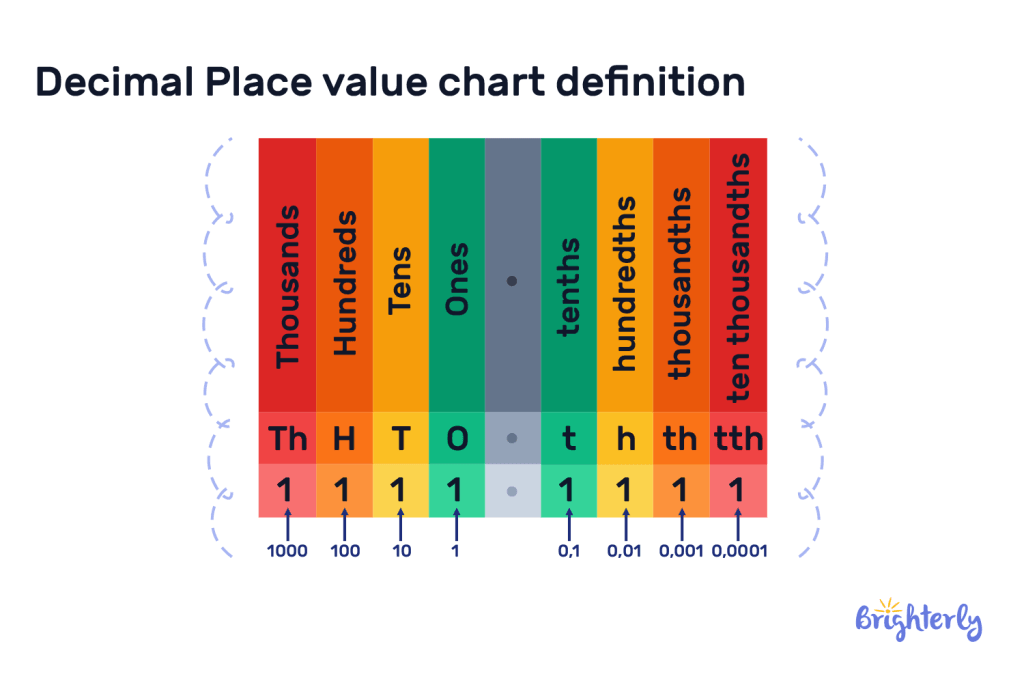
How to find place value in decimal numbers?
Finding the place value in decimal numbers is easy with the chart in place. All that needs to be done is to trace the place value where each digit falls.
For instance, if we were to find the place value of the following numbers;
- 624.753
- 314.612
- 7093.641
- .974
we would simply follow the chart:
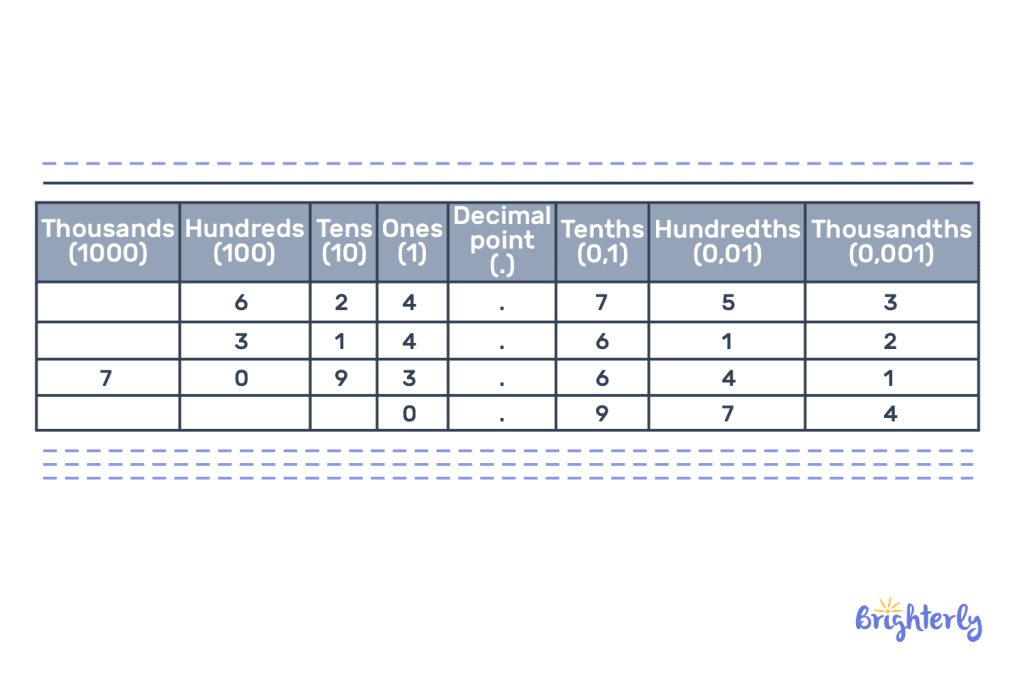
From the chart we can deduce that for the number, 624.753; 6 is in the hundreds, 2 is in the tens, and 4 is in the ones.
However, after the decimal point; the place values change and 7 is under tenths, 5 is in the hundredths, and 3 is in the thousandths.
For the number 314.612; 3 is in the Hundreds, 1 is in the Tens, and 4 is in the Ones
The values here also change after the decimal point; 6 is listed under tenths, 1 is in the hundredths, and 2 falls under thousandths
The third number in the table is 7093. 641 and it has 7 in the thousands, O can be found in the hundreds, 9 in the tens, and 3 under ones.
After the decimal point, the numbers take up new values,; 6 falls under tenths, 4 is under hundredths, and 1 is thousandths.
Lastly, for .974, there is no number as a whole number, therefore, we represent it with a 0 which falls under ones.
After the decimal, 9 is placed under tenths, 7 in the hundredths, and 4 in the thousandths.
Where is the hundredths place in a decimal?
Also known as the second decimal place, the hundredths place is the second number that occurs after the decimal point. It is 1/100 (one-hundredth) of the entire number’s value.
In the number 3.26, 6 is the hundredths digit in the figure.
Solved Math Tasks: Examples
Solved math problem 1
What is the tenth place in the decimal figures:
- 32.45
- 6.32
- 9.87
- 4.86
- 6.54
Answer
The tenth place is the first digit after the decimal point. We can draw a chart for all the given numbers, and then identify which digits fall under the first place after the decimal point.
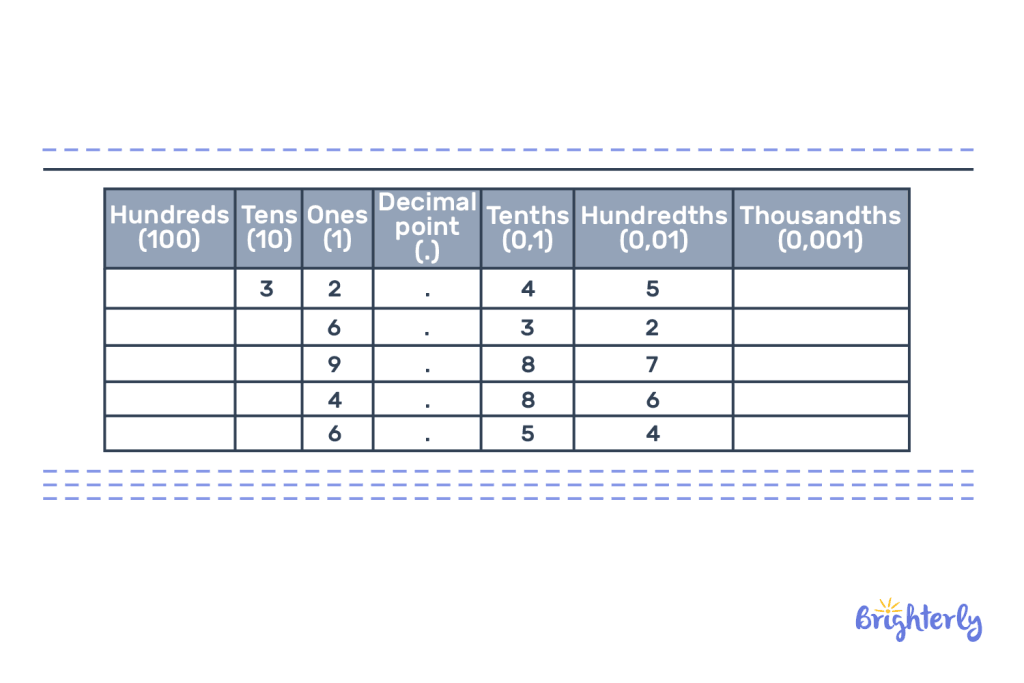
| Therefore, the digit that falls under the first decimal place, and is the tenths of all the given numbers above are 4, 3, 8, 8, and 5. |
Solved math problem 2
Where is the hundredth place in the decimal figures:
- 75. 217
- 8.639
- 4.837
- 3.275
- 19.51
Answer
| The hundredths decimal place, (second decimal place), is the second digit after the decimal point. |
We can follow the chart and identify the digits that fall here:
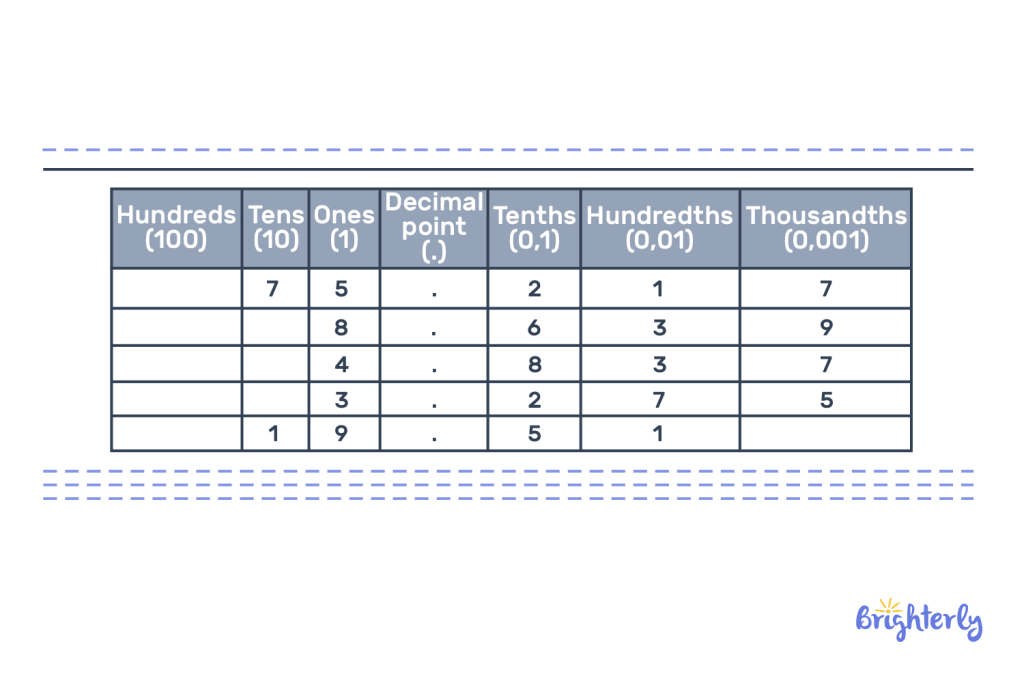
All the digits that are located inside the second column after the decimal point are the hundredths of their respective numbers; 1, 3, 3, 7, and 1.
Solved math problem
Where is the thousandth place in the decimal figures:
- 75.419
- 78.38768
- 99.9132
- 5.4396
- 8.3748
Answer
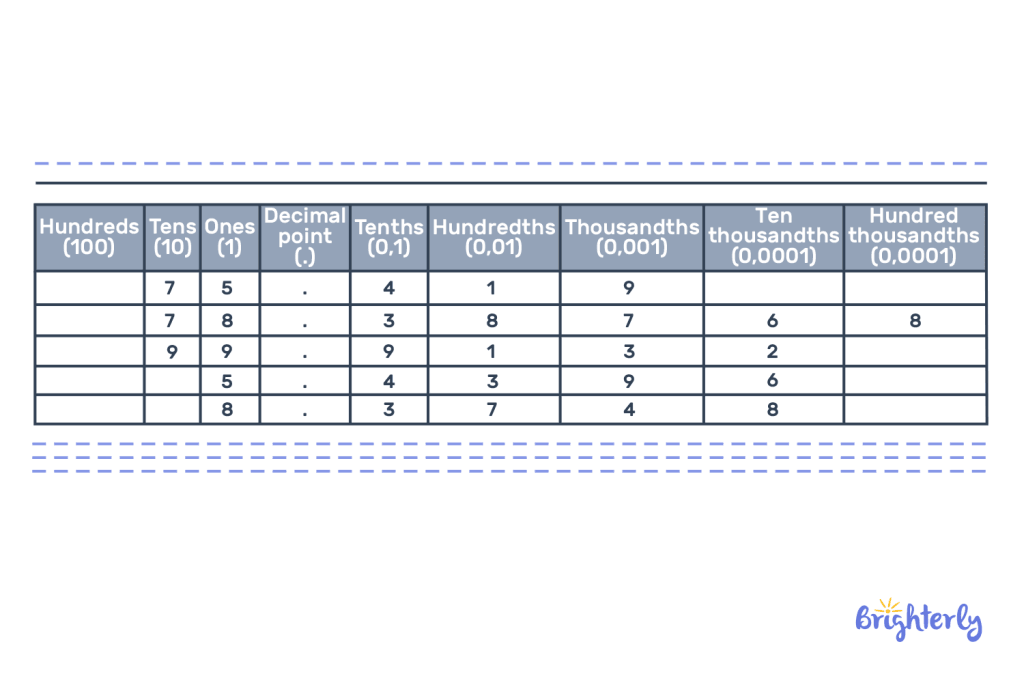
Also known as the third decimal place, the third digit that appears after the decimal point is the thousandth place of the figure.
| It is 0.001 or 1/1000 of the total value of the number. |
Look at the chart and see that these numbers fall under the thousandths: 9, 7, 3, 9, 4.
Solved math problem 4
What do we get if we multiply the digits at the hundredth place and the thousandth place in the number; 3264.57?
Answer
7 is the digit at the hundredth place since it is in the second decimal place. There is no given digit at the thousandth place, therefore, we may assume the digit to be 0.
| 7 × 0 = 0. |
Solved math problem 5
What is the first decimal place in addition to the hundreds place in the number; 682.7617
Answer
| The digit at the first decimal place (tenth) is 7. |
It is the first digit that comes after the decimal point.
The digit at the hundredth place is 6. It does not come after the decimal point but before it.
7 + 6 = 13.
Decimal Place Value: Practice Math Problems
Decimal Place Value: worksheets
Brighterly offers free worksheets that can help improve your knowledge of decimal place values:




